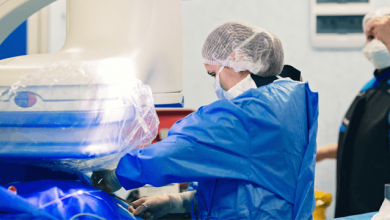Search results
Author(s):
Tom Adriaenssens
,
Giovanni J Ughi
,
Jan Dhooge
,
et al
Added:
3 years ago
In the bare metal stent (BMS) era, several intravascular ultrasound(IVUS) studies have validated the strategy of reducing in-stent restenosis rates by a strict adherence to an optimal stent implantation technique, predominantly by avoiding stent underexpansion.1 In a first phase after the introduction of drug-eluting stents(2003), the spectacular reduction in restenosis rates, based on…
View more
Author(s):
Peter Mortier
,
Heleen MM van Beusekom
,
Matthieu De Beule
,
et al
Added:
3 years ago
Incomplete stent apposition (ISA) or stent malapposition is the lack of contact between stent struts and the underlying arterial wall. ISA has been associated with significantly higher levels of thrombus deposition1 and is typically assessed by intravascular imaging techniques such as optical coherence tomography (OCT) and intravascular ultrasound (IVUS).2–4 These imaging modalities are useful to…
View more
Advances in New Stent Designs without a Permanent Polymer May Solve Polymer-related Complications
Author(s):
Chourmouzios A Arampatzi
,
Raul Moreno
,
Giuseppe Sangiorgi
Added:
3 years ago
Article
Author(s):
Rick Volleberg
,
Stijn van den Oord
,
Robert-Jan van Geuns
Added:
1 year ago
Author(s):
Krishnaraj S Rathod
,
Stephen M Hamshere
,
Daniel A Jones
,
et al
Added:
3 years ago
Coronary angiography has been the gold standard technique for evaluating coronary arterial disease for the past 50 years. Increasingly, however, realisation of the limitations of coronary angiography, mainly the inability to supply information regarding the coronary wall, has prompted the design and development of adjunctive technologies to better evaluate not just luminal disease but also the…
View more
Author(s):
Angela Hoye
Added:
3 years ago
The coronary tree is comprised of arteries which divide into ever smaller branches to supply the myocardium. This means that the diameter of the vessel proximal to a bifurcation is always larger than the diameter of the main vessel distal to the bifurcation. The proximal optimisation technique (POT) was proposed by Dr Olivier Darremont as a technique to compensate for this difference in diameters…
View more
Platinum Chromium Stent Series
Author(s):
Dominic J Allocco
,
Mary V Jacoski
,
Barbara Huibregtse
,
et al
Added:
3 years ago
Article
Author(s):
Axel Schmermund
,
Holger Eggebrecht
Added:
3 years ago
It is estimated that 15-20 % of all coronary interventional procedures involve side branches.1 Side branches are frequently related to periprocedural complications. Side branch occlusion or compromise appears to be the underlying cause of approximately 30 % of periprocedural myocardial infarctions.2 Periprocedural infarction in turn is an important predictor of midterm mortality3. Considering any…
View more
Author(s):
Francesco Prati
,
Fabrizio Imola
Added:
3 years ago
Many experts would agree that the concept of looking at vessel architecture from the inside using intracoronary probes, instead of simply relying on the angiographic vessel cast, is an elegant way to practise interventional cardiology in order to decide whether to treat a coronary artery and to guide coronary intervention. The historical development of stents neatly exemplifies this notion: the…
View more
Author(s):
Luca Longobardo
,
Alessio Mattesini
,
Serafina Valente
,
et al
Added:
3 years ago
Coronary artery bifurcation lesions are treated in 15–20% of percutaneous coronary intervention (PCI) procedures and are still plagued by worse outcomes.1 This is in spite of recent significant advancements in stent technology in general and in bifurcation stenting techniques in particular. Conventional angiography provides only limited information about bifurcation anatomy, plaque distribution…
View more











